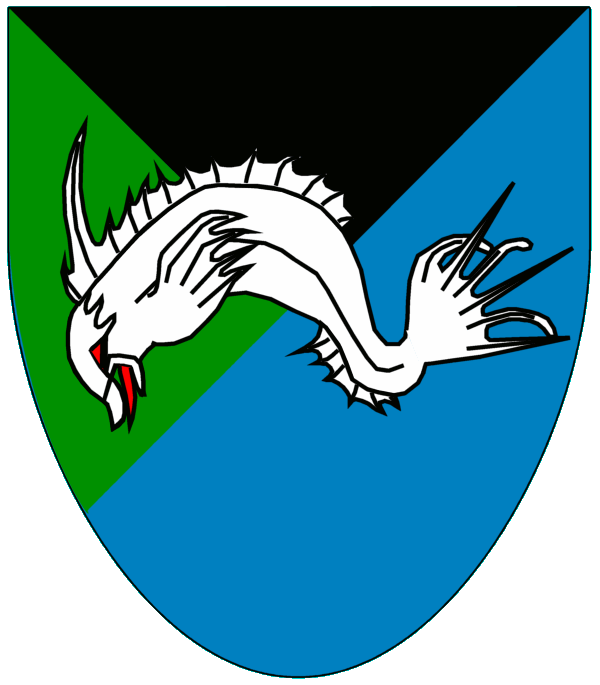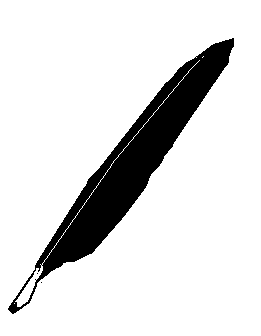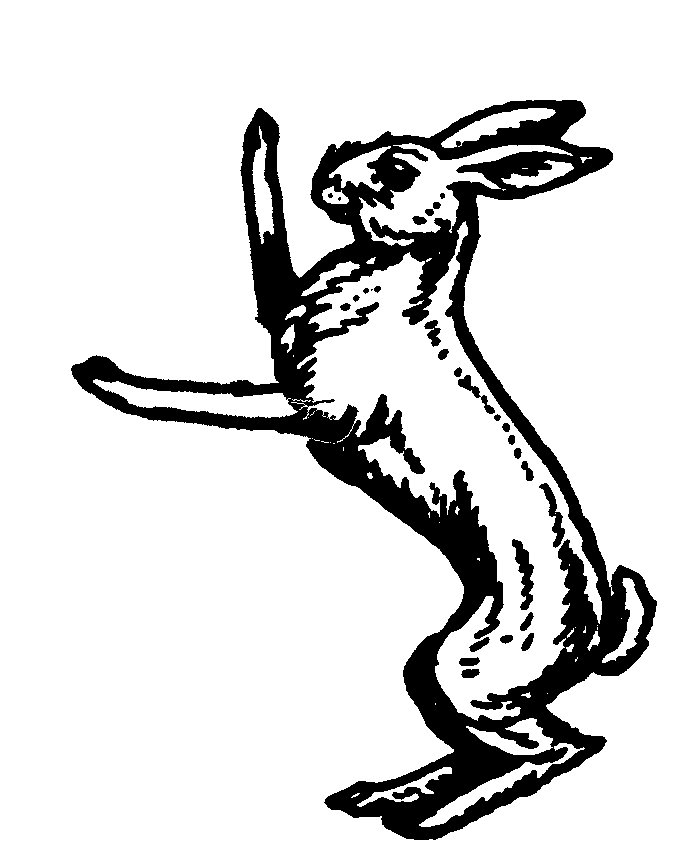|
 If you have a definite Idea of what you want it can be fairly straightforward
to design a heraldic device. All you have to do is find a herald in the
branch of the SCA that you belong to and they'll help you out. They'll look
over your idea and let you know if it fits into the rules of heraldry as
are practised in the SCA. If it doesn't, they'll make suggestions on how
to make it work, or help you figure out another. Then they'll check the
armorial and see if it conflicts with anyone else's arms. There has to be
a certain amount of difference in appearance to any arms already registered.
After a bit more work to make it unique, you can submit it.
If you have a definite Idea of what you want it can be fairly straightforward
to design a heraldic device. All you have to do is find a herald in the
branch of the SCA that you belong to and they'll help you out. They'll look
over your idea and let you know if it fits into the rules of heraldry as
are practised in the SCA. If it doesn't, they'll make suggestions on how
to make it work, or help you figure out another. Then they'll check the
armorial and see if it conflicts with anyone else's arms. There has to be
a certain amount of difference in appearance to any arms already registered.
After a bit more work to make it unique, you can submit it.
What can you do if you don't have any idea what you'd want your arms
to look like? I have a few ideas that might help.
 Charges – Images
Charges – Images
● Have you thought of a medieval persona for yourself?
Are there any symbols or objects that might represent that persona? For example,
if your persona were a 13th century sailor, you might like to have an oar,
anchor, or ship's wheel on your shield. You might even want a whole ship.
 ● What are your favourite things in life? Do any of them
have some roots or equivalents in the Middle Ages? Perhaps they might find
a place as a charge on your arms. For example, if you were a writer as a hobby
or occupation you might choose to use a quill, inkwell, scroll, or a penner
and inkwell. (A penner is a case for quills and pens.)
● What are your favourite things in life? Do any of them
have some roots or equivalents in the Middle Ages? Perhaps they might find
a place as a charge on your arms. For example, if you were a writer as a hobby
or occupation you might choose to use a quill, inkwell, scroll, or a penner
and inkwell. (A penner is a case for quills and pens.)
 ● Are there any things that you feel represent either
you or your persona? For example, are you brave as a lion, or quick as lightning,
cunning like a fox, or wise as an owl? Is your smile as warm as the sunshine;
are you happy as a lark, or colourful as a rainbow?
● Are there any things that you feel represent either
you or your persona? For example, are you brave as a lion, or quick as lightning,
cunning like a fox, or wise as an owl? Is your smile as warm as the sunshine;
are you happy as a lark, or colourful as a rainbow?
● Do you have any affiliations? Perhaps
you are a member of a clan or are affiliated with one. Do you belong to a
household or other group? Though it would be proper to ask permission first,
you might incorporate some aspects of the group's badge or arms. It might
even be expected. It could be something to base your personal device on.
● Look at other devices. Are there any that
you like? Consider just what you like about the device. Perhaps you could
use that device to pattern yours on. Of course it mustn't look too much like
the other.
If you have some ideas about what sorts of objects or charges you'd
like on your shield, you're half way there.
►
|

 Colours - Backgrounds
Colours - Backgrounds
Another direction to take in putting together a heraldic device for
yourself starts with the colours and divisions of the shield.
Your choice of colours can be gold/yellow, silver/white, black, red,
green, blue, purple, some mixtures called "furs", and something called "proper".
Colours, or tinctures, are divided into three categories: metals,
colours, and furs. Gold and silver, of course, are the metals and all but
the furs are considered the colours. The importance of this distinction is
that in heraldry you are not allowed to place a charge with a colour on top
of another colour, and you cannot place a charge with a metal on top of another
metal. For example, no silver foxes on gold shields. (Ask the heralds about
furs. Some furs are considered colours and some are considered to be metals.)

 If you know what colours you'd like on your shield, you can figure out
what ones you want for the charges and what you want in the background. The
field (background) of the shield can be a single colour, metal, or fur or
it can be divided into sections, each with a colour. You should look at a
heraldry book for what ways a field can be divided. Charges may be different
colours or all the same. It is important that the design on the shield is
discernible at a moderate distance.
If you know what colours you'd like on your shield, you can figure out
what ones you want for the charges and what you want in the background. The
field (background) of the shield can be a single colour, metal, or fur or
it can be divided into sections, each with a colour. You should look at a
heraldry book for what ways a field can be divided. Charges may be different
colours or all the same. It is important that the design on the shield is
discernible at a moderate distance.
The one colour I haven't touched on is referred to as "proper". If
you want the charge you are placing on your shield to be the colour the object
would be in nature, you call the colour "proper". For example, if you
want a grizzly bear on your shield and you want it brown, you would say you
want a Grizzly Bear Proper. Objects that are proper are most often considered
as colours rather than metals.
▼
◄
|
|

 Charges – Ordinaries
Charges – Ordinaries
In addition to the more picturesque charges, there are the ordinaries
and sub ordinaries. These are what the divisions of the field got their
names from. A Bend is a stripe that runs diagonally across the field. A
Pale is a stripe that runs vertically up the centre of the field. There
are also disks, with a name for each colour and squares, and other formal,
traditional shapes including a multitude of crosses.
Variations – Lines of Division
The divisions of the field and the ordinaries can be simple straight
lines or they can be any of a number of designs including wavy, arched, dovetailed,
and others. These can subtly or greatly change the appearance of the line
of division or charge.

 Heraldic Flavour and Rules
Heraldic Flavour and Rules
In SCA heraldry there are many rules that might seem arbitrary,
like the limitations to colours, what items or images are not allowed, how
the items on the shield can be portrayed and many others.
Some of these rules have their origins in the actual rules of heraldry
set down by the colleges of heralds in Europe and more particularly the
United Kingdom. Others come from the fact that we are trying to give a medieval
flavour and thus things that might be included in heraldry may not be allowed
because it wasn’t in use before 1600.
►
|

 There are also some rules that have come into being in SCA
heraldry because some things that might have been common and acceptable in
the middle ages are found to be offensive by large sectors of our society.
One example is the “swastika”. It is a symbol used in period medieval heraldry,
but its association with the Third Reich makes it unacceptable because it
would offend many people. Other items that might be found vulgar are also
not allowed.
There are also some rules that have come into being in SCA
heraldry because some things that might have been common and acceptable in
the middle ages are found to be offensive by large sectors of our society.
One example is the “swastika”. It is a symbol used in period medieval heraldry,
but its association with the Third Reich makes it unacceptable because it
would offend many people. Other items that might be found vulgar are also
not allowed.
Some rules are also steeped in the history of the SCA. Some things
are disallowed because they have always been disallowed; some things that
did not exist in period heraldry are accepted because they have always in
the past been accepted. There are even things that were at one time acceptable,
but are no longer.
The rules of SCA Heraldry are available to anyone interested along
with a list of the past and present rulings on what is or isn’t acceptable.

 Don’t worry it is not totally arbitrary.
Don’t worry it is not totally arbitrary.
I hope that this might be of some help for you in choosing a heraldic
device for yourself. What you want to do is get an idea of what you want
on your shield. Then you can fiddle with it with the help of a Herald to
come up with something that will pass and can be registered to you. Remember
that there is no rush. Take whatever amount of time you want.
PS: It was very common for a person to make a pun (or cant) with
their arms, i.e. William Shakespeare's arms. You can look that one up.
|

 Charges – Images
Charges – Images ● What are your favourite things in life? Do any of them
have some roots or equivalents in the Middle Ages? Perhaps they might find
a place as a charge on your arms. For example, if you were a writer as a hobby
or occupation you might choose to use a quill, inkwell, scroll, or a penner
and inkwell. (A penner is a case for quills and pens.)
● What are your favourite things in life? Do any of them
have some roots or equivalents in the Middle Ages? Perhaps they might find
a place as a charge on your arms. For example, if you were a writer as a hobby
or occupation you might choose to use a quill, inkwell, scroll, or a penner
and inkwell. (A penner is a case for quills and pens.)  ● Are there any things that you feel represent either
you or your persona? For example, are you brave as a lion, or quick as lightning,
cunning like a fox, or wise as an owl? Is your smile as warm as the sunshine;
are you happy as a lark, or colourful as a rainbow?
● Are there any things that you feel represent either
you or your persona? For example, are you brave as a lion, or quick as lightning,
cunning like a fox, or wise as an owl? Is your smile as warm as the sunshine;
are you happy as a lark, or colourful as a rainbow? 
 Colours - Backgrounds
Colours - Backgrounds
 If you know what colours you'd like on your shield, you can figure out
what ones you want for the charges and what you want in the background. The
field (background) of the shield can be a single colour, metal, or fur or
it can be divided into sections, each with a colour. You should look at a
heraldry book for what ways a field can be divided. Charges may be different
colours or all the same. It is important that the design on the shield is
discernible at a moderate distance.
If you know what colours you'd like on your shield, you can figure out
what ones you want for the charges and what you want in the background. The
field (background) of the shield can be a single colour, metal, or fur or
it can be divided into sections, each with a colour. You should look at a
heraldry book for what ways a field can be divided. Charges may be different
colours or all the same. It is important that the design on the shield is
discernible at a moderate distance. 
 Charges – Ordinaries
Charges – Ordinaries
 Heraldic Flavour and Rules
Heraldic Flavour and Rules
 There are also some rules that have come into being in SCA
heraldry because some things that might have been common and acceptable in
the middle ages are found to be offensive by large sectors of our society.
One example is the “swastika”. It is a symbol used in period medieval heraldry,
but its association with the Third Reich makes it unacceptable because it
would offend many people. Other items that might be found vulgar are also
not allowed.
There are also some rules that have come into being in SCA
heraldry because some things that might have been common and acceptable in
the middle ages are found to be offensive by large sectors of our society.
One example is the “swastika”. It is a symbol used in period medieval heraldry,
but its association with the Third Reich makes it unacceptable because it
would offend many people. Other items that might be found vulgar are also
not allowed.
 Don’t worry it is not totally arbitrary.
Don’t worry it is not totally arbitrary.